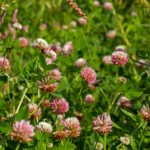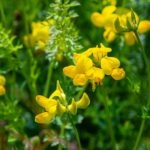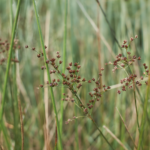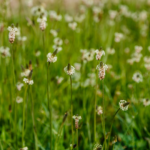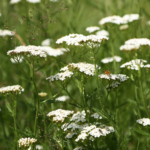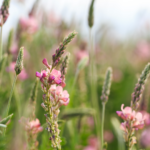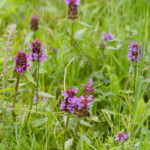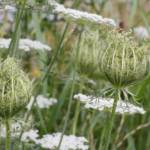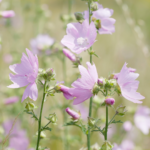DURING ESTABLISHMENT
During the first spring and summer after sowing, it’s advisable to check the margin, block or in-field strip regularly to monitor germination. If the establishment is poor, you may need to re-sow part or all of it. Your seed supplier can help you if you’re unsure what to do.
Cutting the margin, block or in-field strip regularly during the first 12 months after sowing will help to control weeds, so the sown plants can establish. You can do this whenever the weeds are just above the sown flowers, so they’re starting to shade them out. See ‘cutting the margin, block or in-field strip’ below.
MAINTAINING THE ESTABLISHED MARGINS, BLOCKS OR IN-FIELD STRIPS
Once the margin, block or in-field strip is established, you can cut or graze it with livestock as long as it’s done in a way that could reasonably be expected to achieve the aim of IPM2 (described above).
To help you achieve the action’s aim, you could do some or all of the following:
Cut in the spring (usually before the start of April), so vegetation is short enough to allow flower species to grow without competition from dominant grasses.
Cut or graze the summer growth between mid-August and the end of October – this will help reduce soil fertility and boost flower numbers in subsequent years.
Stagger the cutting or grazing, so all the margins, blocks or in-field strips are not grazed or cut at the same time – this will help to provide a constant supply of flowers for invertebrates.
Leave an area within each margin, block or in-field strip (for example, 10%) uncut or ungrazed each year – this will help to provide a refuge for insects and other wildlife over winter.
CUTTING THE MARGIN, BLOCK, OR STRIP
If you’re cutting the margin, block or strip check it for signs of nesting birds before you cut it – birds, nests and eggs are protected by law, so if you see signs of nesting birds, delay cutting until the birds fledge.
Then remove the cut vegetation, where possible, to help reduce the risk of it smothering the flower species and limit weeds – if it’s impractical to do this, you can finely chop them to spread them as thinly as possible.

